- Register
- Log in to Tune-In
- Wishlist (0)
-
Shopping cart
(0)
You have no items in your shopping cart.
Beatles News
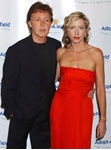
The ex-wife of former-Beatle Paul McCartney is being sued by her hairstylist for failure to pay for more than a dozen $5,000 haircuts, according to court documents.
Celebrity hairstylist David Miramontes, who goes professionally by the name David Paul, claims that he began providing Heather Mills (pictured at left) haircuts in 2005, during an effort by the former model to revive her career, reports TMZ.com. Mills' moves included appearances on ABC's "Dancing With The Stars."
Source: David Schepp
details
t must have been quite a heavy load for Ringo Starr to carry as the Beatles changed the course of rock music. Starr has had a front-row seat for it all as the drummer in the band. Starr and Paul McCartney are the remaining live members of the Beatles. They have a deep kinship that was formed back during the active days of the Fab Four.
“Yeah, they know me,” Ringo Starr told AARP. “Paul loves me as much as I love him. He’s the brother I never had. As an only child, suddenly I got three brothers. We looked out for each other. We all went mad at different times. You can’t imagine what it was like, being in the Beatles. It got bigger and crazier.”
He even recalls the first time he heard the band on a record. “We were playing clubs, and then we made a record, Love Me Do. My God, there’s nothing bigger than that, our first vinyl. We found out the BBC was going to play Love Me Do at 2:17, or whatever time it was, and we pulled the car over. ‘Wow! We’re on the radio, man!'”
Source: Joe Rutland

George Harrison is known by many for the profound, questing nature of his songwriting. But he also often displayed a whimsical side that showed that he didn’t ever take himself too seriously. “Crackerbox Palace,” a Top-20 hit for Harrison in 1976, managed to touch on both extremes in his artistic arsenal.
What is the song about? And how did a chance meeting inspire it? Let’s find out about how George Harrison happened upon “Crackerbox Palace.”
George Harrison had formed his label Dark Horse Records in 1974, but wasn’t able to record anything on it until his contract with EMI ran out. 33 1/3, the album Harrison released in 1976 that included “Crackerbox Palace,” would be the first release on the Dark Horse label that would be used exclusively for Harrison releases in the future.
Harrison recorded the album at a studio he had built on his Friar’s Park estate in England. And he served as a host to his bandmates, who actually lived on the grounds while the record was being made. That collegial atmosphere worked its way into the record, one of the gentlest and most good-natured of his career.
Source: Jim Beviglia/americansongwriter.com
details
Songwriting inspiration can come from anywhere – but the realms of sleep are perhaps the most mysterious. It it the subconscious or something more? The not knowing is part of the magic, and dream-inspired songwriting has given birth to some absolute classics.
Whether it's a line, hook, riff or a whole song the writer wakes up to capture before it slips away again, we're here to look at the top 40 songs that owe their existence to 40 winks.
1. Drops Of Jupiter (Tell Me) – Train (Pat Monahan)
The US band's 2001 hit and Grammy-winner Drops Of Jupiter took a deeper dimension for listeners when its genesis was revealed by vocalist Pat Monahan. It was the band's breakthrough hit, but its inspiration came at a bittersweet price.
"I would give it back," Pat Monahan candidly told the Daily Blast in 2022. "I lost my mother that year so that's why the song was written. So I'd give the song back if I could still call my mom but it was a great gift that she gave me."
She came to me in a dream
A gift because Monahan felt that his late mum Patricia was reaching out to him one night. "She came to me in a dream and she said she can do all these things now, including swimming through the p details
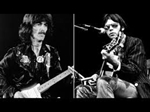
The Beatles were the biggest band of the 20th century, and part of their success came from their abundance of attitude. Some of the band members, notably John Lennon, were quite opinionated and unafraid to share those opinions with a world that was always listening. With that openness to speak their mind came the occasional sour opinion about fellow musicians. And with that, here are three musicians and bands that The Beatles said that they weren’t very fond of.
1. Blood, Sweat & Tears
John Lennon famously said that he rarely ever listened to major artists, notably the top ten artists in the world.
“Only when I’m recording or about to bring something out will I listen [to the top ten],” Lennon said in an interview with Rolling Stone Magazine back in 1971. “Just before I record, I go buy a few albums to see what people are doing. Whether they have improved any, or whether anything happened. And nothing’s really happened”.
Lennon went on to say some pretty strong things about Blood, Sweat & Tears, who were in their heyday at the time.
“I don’t like the Blood, Sweat & Tears sh*t,” said Lennon. “I think all that is details

For a time, John Lennon was the clear frontman of The Beatles. His bandmates looked to him with admiration and media outlets established him as the group’s leader. According to a Beatles associate, this was a position Lennon wanted but could not hold. He grew too lazy as the 1960s wore on.
John Lennon was initially the clear leader of The Beatles
Peter Brown, the personal assistant to Beatles manager Brian Epstein, had a close working relationship with the band for years. While he said he did not play favorites, he primarily communicated with Paul McCartney. McCartney was more invested in the group than his bandmates.
“I could communicate with Paul. I suppose I was closer to him, but I was always enamored of John’s enigmatic personality,” Brown told Rolling Stone. “Paul was the thorough one, the workaholic, and John was lazy.
Source: Emma McKee/imdb.com
details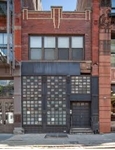
The building, at 496 Broome Street, was the first home in New York City that the couple owned and is now listed by Sean Ono Lennon and his mother for $5.5 million. A two-story, red brick structure, with decorative checkerboard glass squares on the facade.
One of John Lennon and Yoko Ono’s first homes in New York City was a two-story building at 496 Broome Street in SoHo.
It was the first New York City home they owned, shortly after the breakup of the Beatles. In the fall of 1971 — two years before moving to the famed Dakota apartment house on the Upper West Side — John Lennon and Yoko Ono had settled downtown, buying a petite loft-style building at 496 Broome Street in SoHo. At the time, Lennon had just released his second solo studio album, “Imagine.”
Upon relocating to New York, Lennon began forging his own identity with Ms. Ono, an avant-garde artist, musician and peace activist, while publicly distancing himself from his former bandmate Paul McCartney, with whom he had created some of the 20th century’s most popular songs.
“He thought New York was a place where he could be left alone,” said Philip Norman, the author of the biography “John Len details

According to figures released Friday, the former member of the Fab Four is the first British musician to be worth 1 billion pounds ($1.27 billion).
The annual Sunday Times Rich List calculated that the wealth of the 81-year-old musician and his wife, Nancy Shevell, had grown by 50 million pounds since last year thanks to McCartney’s 2023 Got Back tour, the rising value of his back catalogue and Beyonce’s cover of The Beatles’ “Blackbird” on her “Cowboy Carter” album.
A “final” Beatles song, “Now and Then,” was also released in November and topped music charts in the U.S., the U.K. and other countries. Surviving Beatles McCartney and Ringo Starr completed a demo track recorded in 1977 by the late John Lennon, adding in guitar by George Harrison, who died in 2001.
Source: whas11.com
details
Four years after his death, John Lennon popped up on radios all over the world once again, sounding fresh and energized. “Nobody Told Me” was originally intended to represent the next chapter in Lennon’s music career. As it turned out, the song would prove a bittersweet reminder of what might have been.
What was the song about? What other ex-Beatle was the intended target for it? And how did it progress from its initial incarnation to being chosen as first single off Milk and Honey, Lennon’s first posthumous album released in 1984? Let’s go back to find out how “Nobody Told Me” came to be, while also checking out the meaning behind the song.
Writing in His Downtime
When the Cliff’s Notes version of John Lennon’s life story is told, you’ll generally hear that he used the time from 1976 to 1979 to concentrate on his roles as a house-husband and father, spending most of his time in his apartment with wife Yoko and son Sean, before re-emerging with his and Yoko’s album Double Fantasy in 1980.
But that broad overview doesn’t take into account that Lennon was writing all along during that stretch, even if he wasn’t recording and details

The Beatles: a band whose influence transcends generations, genres, and continents. With a catalog as rich and diverse as their impact on music history, narrowing down their top 10 songs is no easy feat. From the early days of Beatlemania to their revolutionary experimentation in later albums, each track is a testament to their unparalleled talent and creativity. In this article, we embark on a journey through the sonic landscape crafted by John Lennon, Paul McCartney, George Harrison, and Ringo Starr, exploring the timeless melodies, poignant lyrics, and groundbreaking arrangements that have solidified their place in musical legend. From the infectious energy of their early hits to the introspective depth of their later compositions, every song selected for this list represents a moment of brilliance in The Beatles’ illustrious career. Whether you’re a lifelong fan or a newcomer to their music, join us as we celebrate the top 10 best songs ever created by the Fab Four, each one a masterpiece that continues to captivate and inspire listeners across the globe.
1. Here Comes The Sun
2. A Day In The Life
3. Help!
4. While My Guitar Gently Weeps
5. Strawberry Fields Forever
6. Here,
details
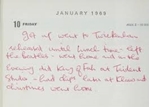
George Harrison walked out on the Beatles on January 10, 1969, and his diary offers a glimpse into how he dealt with the split.
1969 excerpt from George Harrison's diary reveals what he did moments after he ‘left the Beatles’
The 20th century was blessed with the Beatles, whose soul-stirring music resonated across the globe. Composed of vivid and talented artists, the band was an integral part of the music industry. But in 1969, George Harrison left the Beatles for his own reasons and quit the band. According to Diaries of Note, a letter from that year sheds light on Harrison's reasons for leaving and his subsequent actions. On January 10, 1969, Harrison detailed in his diary what he did moments before and after he "left the Beatles." The band had been practicing tirelessly for their final album. Besides that, some tension and disagreements were building up among members.
Source: Angelina C Dsouza/scoop.upworthy.com
details
Beatles lore has long held that the film Let It Be was a depressing portrait of the band falling apart. According to the same lore, that’s why Peter Jackson’s Get Back was such a revelation. Revisiting Michael Lindsay-Hogg’s footage of the group at work in January 1969, Jackson discovered there was far more joy around than anyone suspected – including the surviving Beatles.
Yoko remains a darkly brooding presence (the revisionism that sees her as benign needs its own revision)
All of which, it now turns out, only goes to prove the ever-reliable power of suggestion. I vaguely remember seeing Let It Be on TV in the 1970s, before it disappeared until last week – and finding it as miserable as I already knew everybody said it was. Except that it really isn’t. Having started watching the film on Disney+ in the mental equivalent of the brace position, I soon found myself successively giving way to relief, delight and a familiar sense of awe at all the Beatles achieved, and at how quickly they achieved it.
At one point, Paul looks back with amusement on the band’s time in India with the Maharishi, gently ribbing John for his uncharacteristic lack of scepticism. This lon details
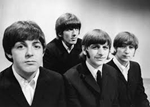
The Beatles are one of several musical acts from decades past that typically manage to appear on at least one Billboard chart every week. The group’s music is still incredibly popular, so it’s not odd to see them rise and fall on the weekly tallies, as Americans can’t stop streaming and buying their many hits.
All that consumption has helped The Beatles return to two rankings this time around. They find their way back with an album that was released decades after they split up and which has gone on to become one of the most successful compilations of all time.
The Beatles' 1 reappears on the Billboard 200 this week at No. 175. That’s a fairly low position for the beloved compilation, but the fact that it’s returning, and not simply climbing or sliding back, shows a noticeable uptick in consumption from one frame to another. It has essentially climbed at least 26 spaces, as last frame it must have been sitting at No. 201, at its highest—though of course no such position actually exists.
In the past tracking week, 1 moved another 8,488 equivalent units. That sum includes only 443 pure purchases, so fans listening on platforms like Spotify and Apple Apple Music did most o details

Following their sell-out Number #1 Tour across Ireland in Summer 2023, The Classic Beatles are back with their Magical Mystery Tour in 2024. Relive the sights and sounds of the Sixties in a stunning 2-hour show stuffed with the best songs ever written.
The Classic Beatles are the only Beatles Tribute band personally endorsed by Sir George Martin (Legendary Beatles Producer) and to have performed for the Queen. Widely recognised as one of the best Beatles Tributes in the world, The Classic Beatles Magical Mystery Tour 2024 is sure to satiate even the most hardened of Beatle Fans. Expect a whole new set – from Moptop to Rooftop – with all the hits and some new deeper cuts NEVER BEFORE performed live!
With multiple costume changes and lots of cheeky banter, catch The Classic Beatles at the top of their game for a great night’s entertainment. Fan favourites in the set include: ‘In My Life’, ‘Nowhere Man’, ‘Rain, Tomorrow Never Knows’, ‘A Day In The Life’, ‘Your Mother Should Know’ and loads more incredible songs.
“The vocal resemblance is uncanny” – Sir George Martin
“Best Beatle Tribute band on planet
details

The Beatles drummer has given a new interview where he discussed the band's working relationship and Ringo Starr believes The Beatles would have made far fewer records if it wasn't for Paul McCartney.
The famous Fab Four drummer has opened up about the dynamics of the band in a new interview, where he discussed how they rowed and in later years relied on McCartney to motivate them.
Speaking to Dan Rather for AXS TV, the Yellow Submarine singer explained: "We didn't get along. We were four guys. We had rows. It never got in the way of the music, no matter how bad the rows got, once the count in, we all gave our best".
The drummer also went onto explain that the band - completed by the late John Lennon and George Harrison - found it hard to motivate themselves as they got older and their families grew.
"And that was a little later too, which I think is a natural thing," he added. "Suddenly, we’ve got lives and I've got children and you know, the effort that we put in 'cause we worked really hard was starting to pale a little and, you know, we always thank Paul to this day.
"Because of Paul, who was the workaholic of our band, we made a lot more records than John and I would’ve m details
